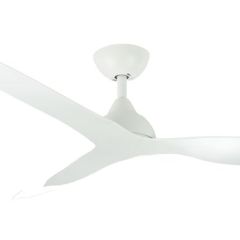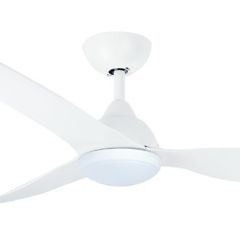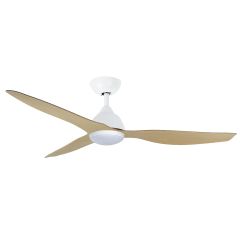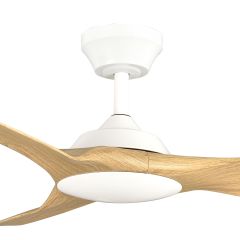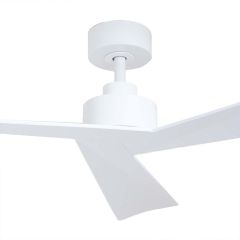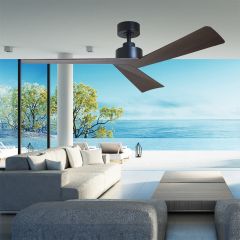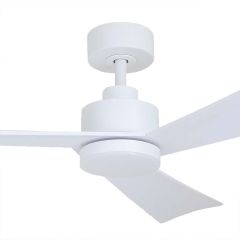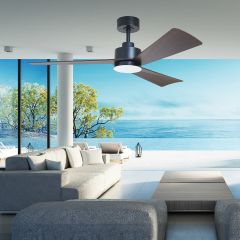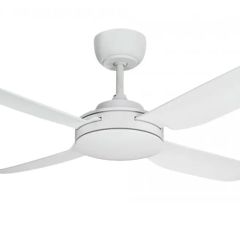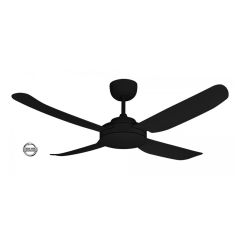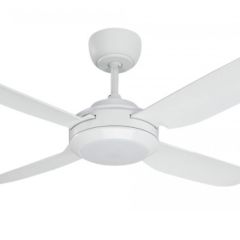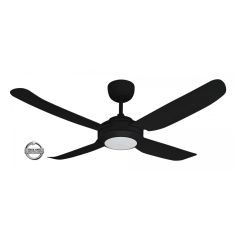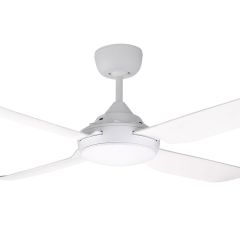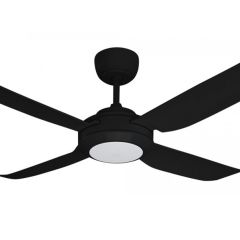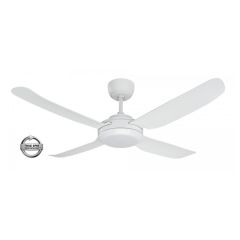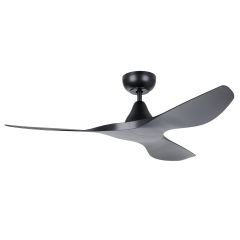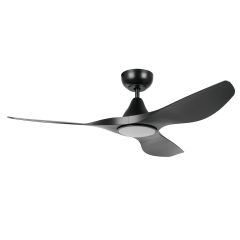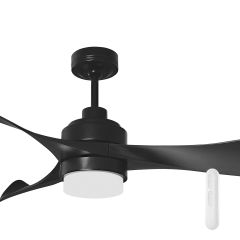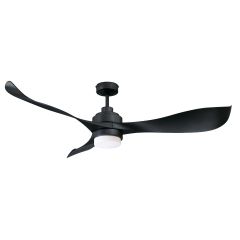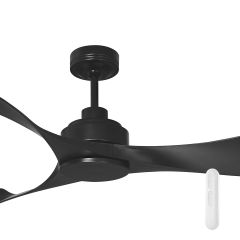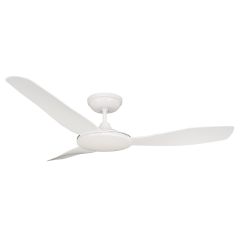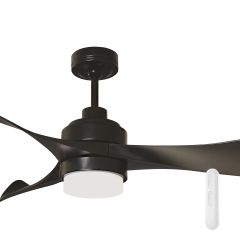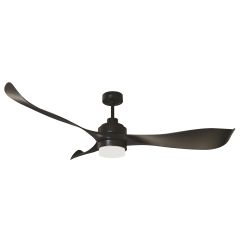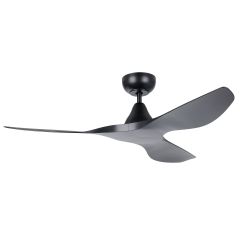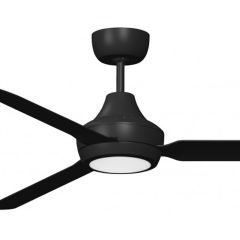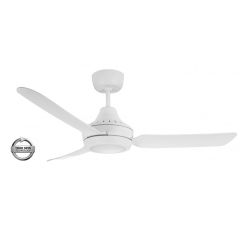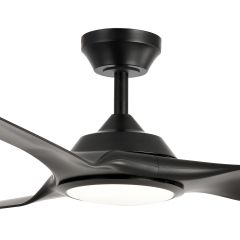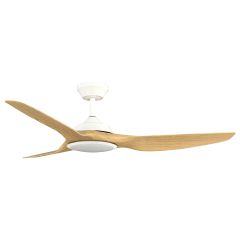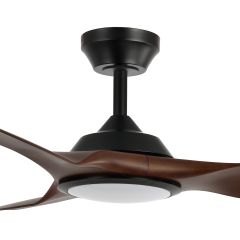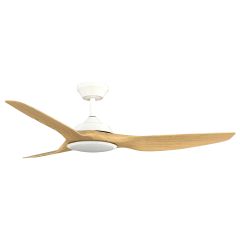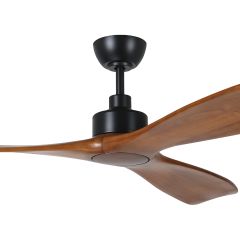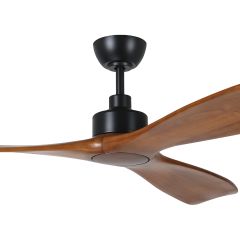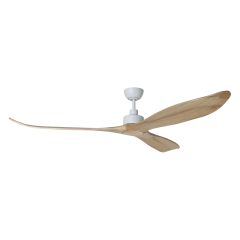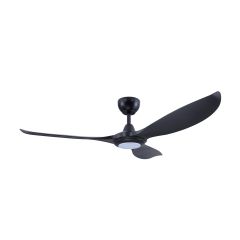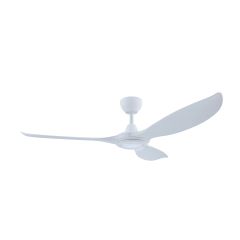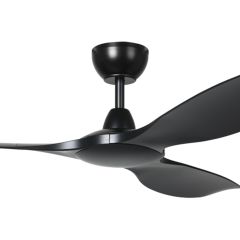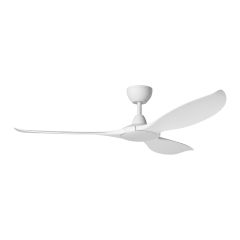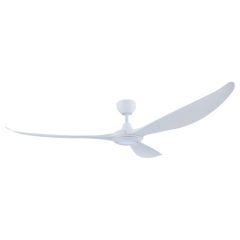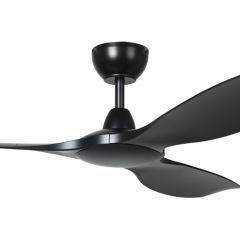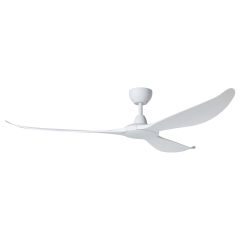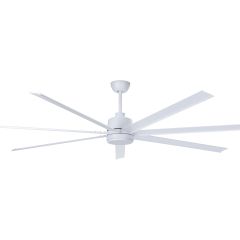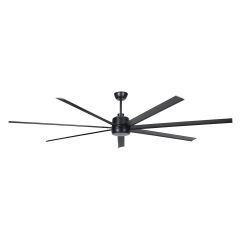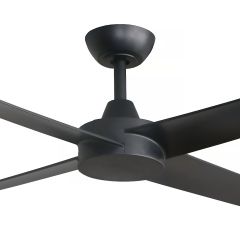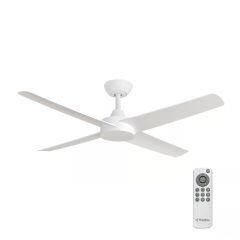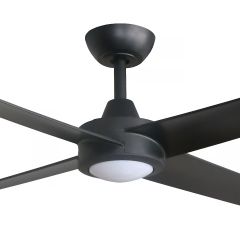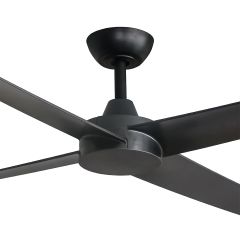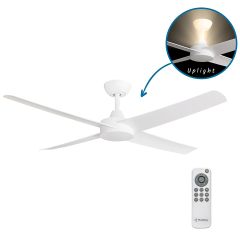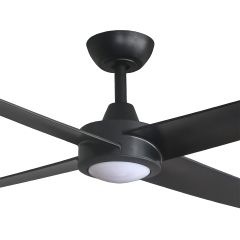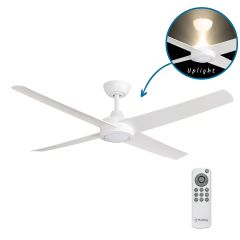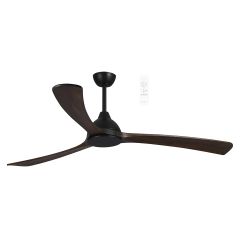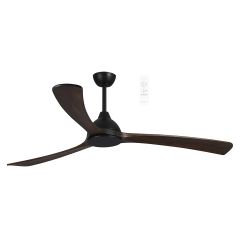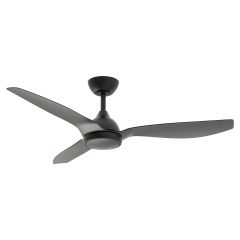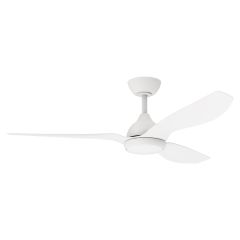When it comes to choosing the right ceiling fan for your home, the options can be overwhelming. There are many different types of ceiling fans available on the market, each with its own set of features and benefits. To help you navigate through the different options, we've compiled a list of the fundamental factors to consider when selecting the perfect ceiling fan for your home.
Ceiling fans are a popular and practical addition to any room, providing a cost-effective way to regulate temperature and create a comfortable living space. If you already have sufficient lighting in a room, such as LED downlights or wall lights, then opting for a ceiling fan without a light kit might be a better option for you.
Ceiling fans without light kits offer the same style and functionality as fans with light kits, without the added cost of an integrated light. They come in a range of designs, including modern, contemporary, and traditional styles, making it easy to find one that complements the decor of your room. In addition, a ceiling fan without a light kit can be a great budget-friendly option, allowing you to enjoy the benefits of a fan without the added expense of a light.
Ceiling fans with lights are a popular and practical choice for any room that needs both cooling and lighting solutions. If your living space is lacking in sufficient light levels, then a ceiling fan with a light kit is a smart choice to enhance your home's ambiance and atmosphere.
The latest innovations in technology have resulted in the creation of ceiling fans with energy-efficient LED lights, which are quickly becoming the standard choice for many homeowners. LED lights provide brighter and longer-lasting illumination than traditional incandescent bulbs, while using less energy, resulting in lower energy bills and reduced environmental impact. In addition, LED lights have a range of colour temperatures, from warm to cool, allowing you to customize the lighting in your room to suit your preferences.
Ceiling Fans with Remote Control
Ceiling fans with remote controls are becoming increasingly popular due to their convenience and ease of use. If you're considering purchasing a ceiling fan, opting for one with a remote control can make your life much easier.
Ceiling fans that do not specify that they come with a remote control will typically come with a wall control instead. The downside of having a fan with a wall control is that it can be inconvenient to get up every time you want to turn the fan on/off or even to adjust the fan speed. This can be especially inconvenient when you're trying to relax or sleep and don't want to disturb your comfort. User can buy a separate remote control as an option.
AC / DC Motor Ceiling Fans
Ceiling fans are available in two motor types - AC and DC motors.
AC motor ceiling fans are connected directly to the power source, providing the force required to rotate the motor of the fan. They are generally less expensive than DC motor ceiling fans and come in a wide variety of styles and designs. AC motor ceiling fans are a good choice for those who are looking for a traditional and reliable option.
On the other hand, DC motor ceiling fans use the same AC power, but with the assistance of a transformer that converts the power to DC. This decreases the amount of power required to operate the fan, thus making it more energy efficient and cost-effective to run. Although DC technology is relatively new in the market, it has been gaining popularity due to its superior energy efficiency.
While DC ceiling fans are typically more expensive than their AC counterparts and come with fewer options in terms of design and style, they are a more sustainable and cost-effective long-term option. Additionally, DC ceiling fans offer features such as variable speed control, reverse airflow, and remote control options that make them more convenient to use.
Outdoor / Coastal Ceiling Fans
Outdoor and coastal ceiling fans are specially designed to withstand the elements of nature, including moisture, wind, and salt air. When it comes to selecting a ceiling fan for outdoor use, it's important to choose a fan that is rated for damp or wet locations. Damp-rated ceiling fans are suitable for covered outdoor areas, such as porches or patios, that are not directly exposed to rain or other forms of moisture. Wet-rated ceiling fans, on the other hand, can be installed in fully exposed outdoor areas, including decks and pergolas, and can withstand rain and other forms of moisture.
Coastal ceiling fans are designed to withstand the corrosive effects of salt air and are ideal for use in homes located near the ocean. These fans typically feature materials that are resistant to rust and corrosion, such as stainless steel or non-corrosive metals. They are also designed with sealed motors to prevent moisture and salt air from entering the motor and causing damage.
It's important to note that indoor ceiling fans should never be used for outdoor applications. Indoor fans are not designed to withstand the elements of nature and can be dangerous when exposed to moisture. Using an indoor fan outdoors can also void the warranty and lead to premature failure of the fan.
When choosing an outdoor or coastal ceiling fan, look for models with high Ingress Protection (IP) ratings or Damp ratings, as these indicate that the fan is designed to withstand moisture and other outdoor elements. Additionally, look for models with powerful motors that can deliver effective air movement, even in large outdoor spaces. With a properly selected and installed outdoor or coastal ceiling fan, you can enjoy a comfortable breeze and stylish look in your outdoor living spaces.
Low profile ceiling fans are a great option for those with low ceiling heights. These fans are designed to fit in tight spaces and not take up too much vertical space, making them perfect for rooms with ceilings that are less than 2.4 metres. These fans are just as effective as their standard counterparts in circulating air throughout a room and keeping you cool and comfortable.
One of the main benefits of low profile ceiling fans is their sleek and stylish design. They come in a variety of cool and contemporary styles that can match any room decor. Whether you prefer a minimalist look or a more ornate design, there's a low profile ceiling fan to suit your taste.
With the advancement of technology, there are now smart ceiling fans available on the market. These fans come with Wi-Fi enabled technology that can be easily controlled by a smartphone app or voice command using virtual assistants such as Amazon Alexa or Google Assistant. This means you can control the fan from anywhere, even when you're away from home. You can adjust the fan speed, turn it on or off, and even set a schedule for the fan to turn on and off automatically.
One of the most significant advantages of smart ceiling fans is their ability to integrate with smart home systems. You can connect them with other smart devices in your home, such as your thermostat or lighting, and create a complete smart home ecosystem. Some models even have built-in sensors that can detect the temperature and humidity in the room and adjust the fan speed accordingly, providing optimal comfort.




